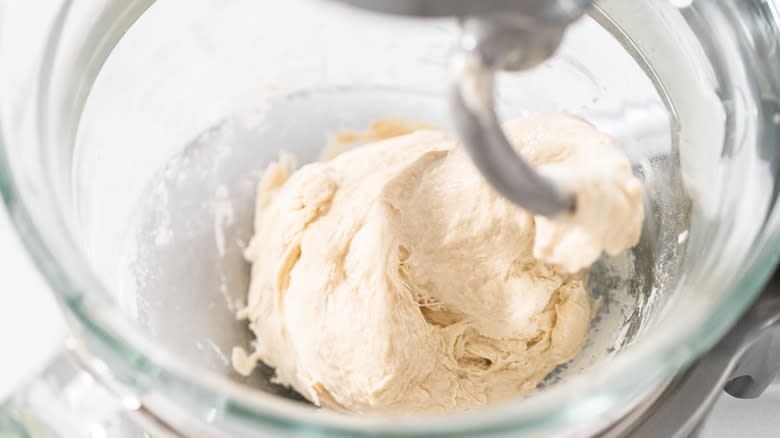Save The Butter For Last When Making Brioche

Brioche is perhaps one of the richest breads ever created. It has a beautifully soft texture, and a terrific sweet, buttery taste. In fact, butter is the essential ingredient that gives brioche its richness. Without it, brioche would be nothing. However, exactly when you incorporate butter into the dough is extremely important in developing the bread's character.
The role butter plays in baking brioche is crucial. It brings flavor, texture, and structural integrity to the bread, and helps enrich the dough. Enriched doughs are those that have been combined with other ingredients, such as eggs, sugar, milk, and oil. These additions make for a softer and far sweeter finished bread than those that are not enriched, like rustic sourdough. When you're making an enriched dough, especially one as butter-heavy as brioche, the development of a gluten network is of vital importance to the bread's success. At what point you add the butter has a direct impact on that development.
Gluten proteins need to bond and multiply in order to give the bread its structure, and for the dough to rise properly. If you were to add the butter right at the beginning, the fat proteins in the butter would bond with those of the gluten, preventing the gluten from creating a strong network. So, success with brioche is really a matter of timing, patience, and understanding the chemistry of the bread.
Read more: Bread Baking Mistakes Everyone Makes
How To Incorporate Butter Into Brioche

Authentic brioche is a combination of flour, sugar, eggs, milk, yeast, and, of course, butter. Patience is also a key ingredient. The dough needs a lot of mixing and kneading in order to form the right strength and elasticity to achieve the desired texture.
To begin, you take all of the ingredients, except the butter, and mix them together. This is easiest if you have a stand mixer which, at medium speed, will have the dough actively constructing its gluten network in between 7 to 10 minutes. Once that happens (and not before) it is time to bring in the butter. Add the butter piece by piece, allowing each 1 to 2 minutes of mixing until it is fully incorporated into the dough. Once it is finally kneaded into a smooth, soft ball you'll know the butter has been fully incorporated. This dough ball gets chilled overnight to slowly ferment, and properly cool the butter.
In the end, what you should have is a bread that is simultaneously light in texture, but sweet, buttery, and rich in taste. It's a great choice for sandwiches, French toast, desserts, and even as a crust for salmon. Brioche is a wonderful thing to know how to make, so long as you're patient and know to add your butter towards the end of the kneading process.
Read the original article on Tasting Table.

 Yahoo Lifestyle
Yahoo Lifestyle 
